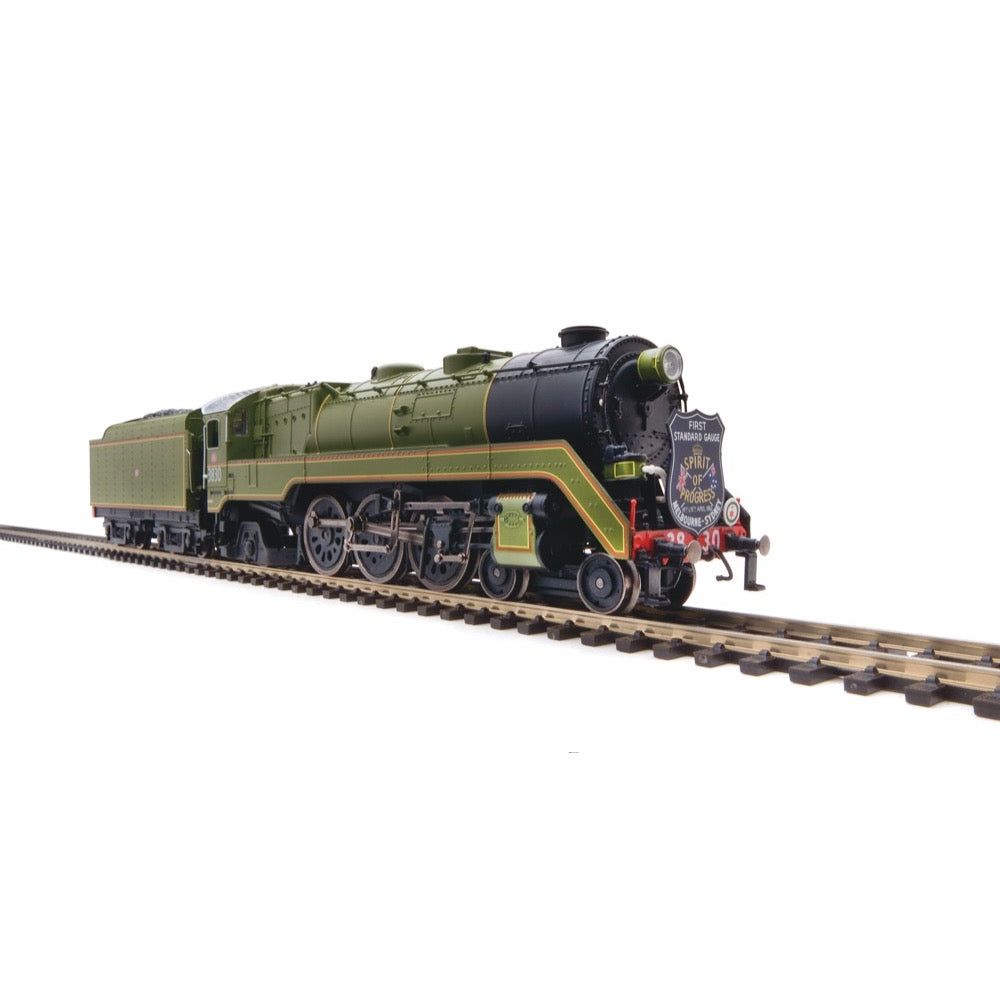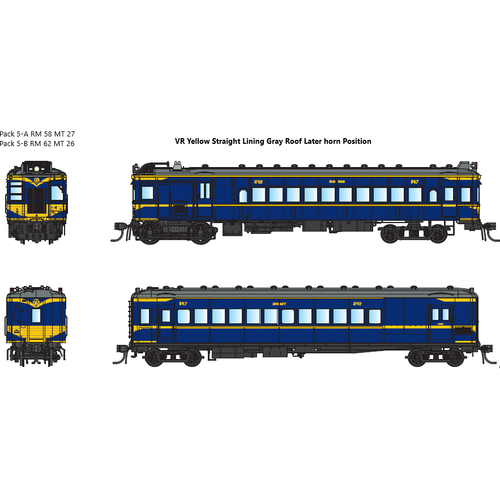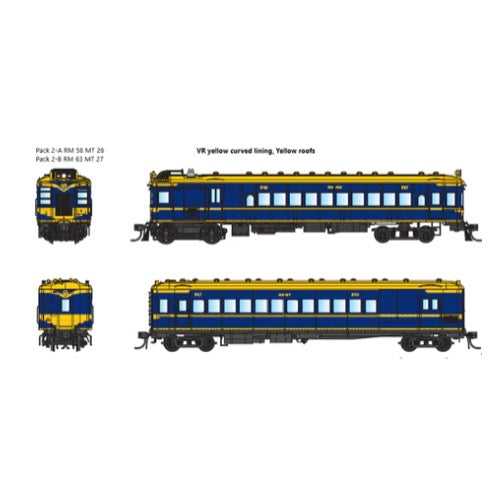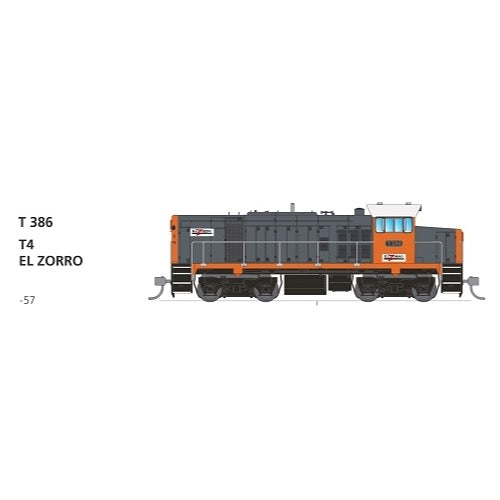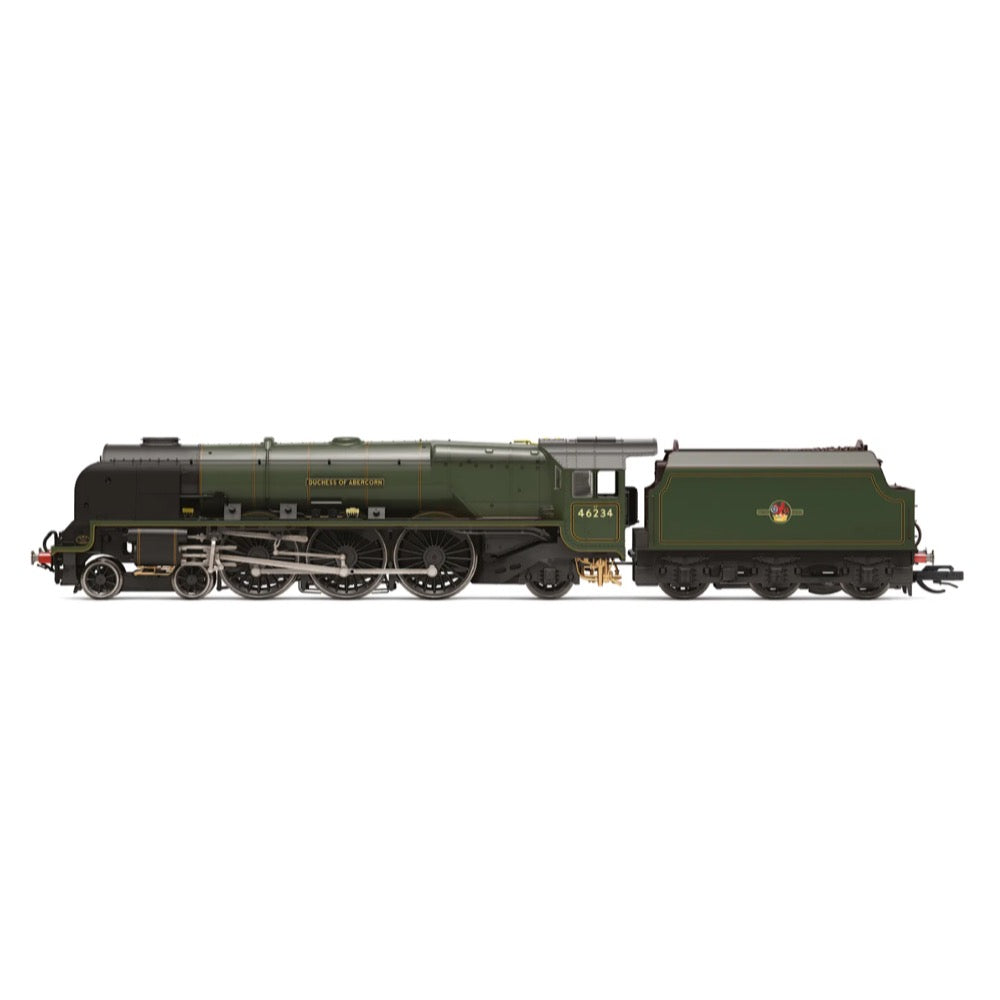
Hornby TT3012M TT BR Late Princess Coronation 4-6-2 46234 Duchess of Abercorn
98.00
$
<p>The story of the Princess Coronation Class is one of split personalities and purposes. The original streamlined form of the class arose from tests on Stanier's development of the Princess Royal class locomotives. When the opportunity to produce five conventional versions of the Coronation Pacific as a comparison to the streamlined version arose, Stanier was quoted as saying, 'They can have their streamliners if they b***** want them, but we will also build them five proper ones' such was his lack of interest in a streamlined locomotive specifically.</p>
<p>Those first five conventional locomotives were 6230 Duchess of Buccleuch to 6234 Duchess of Abercorn, colloquially known as Duchesses, after the first of this sub-class. Appearing in 1938 with a single chimney and without smoke deflectors, many purists regard these as the finest Pacific locomotives ever produced. The next four Duchesses to appear were 6249-6252 in 1944 and they emerged from works with a double chimney.Originally ordered as streamlined, the demands of maintaining the streamlined form exceeded the cost savings in coal and so they emerged from works without the casing, but with streamlined tenders (which had been completed before that decision was taken). In 1946 the next three Duchesses, 6253-6255, differed in appearance again, this time the curved fall plate at the front was replaced by a split platform and smoke deflectors were fitted.</p>
<p>The process of de-streamlining the remaining engines began with 6235 City of Birmingham in April 1946, with 6243 City of Lancaster being the last in May 1949. Locomotives that had streamlining removed had a distinctive slant to the leading edge of the top of the smokebox, where this was previously hidden by the panels and designed to accommodate them. Eventually the raked smokeboxes were replaced with conventional smokeboxes, so that by late 1958 the majority of the fleet showed a similar appearance for the first time.</p>
<p>Duchess of Abercorn entered LMS service in 1938 in the LMS Crimson Lake livery. Before nationalisation however the locomotive is said to have been painted into a solid blue-grey colour, the only such example to allegedly receive this paint job however no photos confirm this. Duchess of Abercorn would then go on to be painted in two different liveries under BR and be renumbered from 6234 to 46234. The locomotive would be scrapped at Crewe in June of 1963.</p>
<h3>Specification</h3>
<ul>
<li>Item Length - Without Packaging (cm): 19.7</li>
<li>Item Height - Without Packaging (cm): 3.7</li>
<li>Item Width - Without Packaging (cm): 2.5</li>
<li>Item Weight - Without Packaging: 0.16</li>
<li>Item Scale: 1:120 Scale</li>
<li>Finish: Painted</li>
<li>Colour: Green</li>
<li>Gauge: TT</li>
<li>DCC Status: Next 18 Socket (NEM 662)</li>
<li>Operator: BR</li>
<li>Designer: Sir William Stanier</li>
<li>Wheel Configuration:4-6-2</li>
<li>Livery: BR Green</li>
<li>Minimum Curve (mm): Radius 2</li>
<li>Motor: 5 Pole</li>
<li>Number of Parts: 1</li>
<li>Class: Princess Coronation Class</li>
</ul>

Hornby R3895 OO Rowntree and Co. Ruston and Hornsby 88DS 0-4-0
73.00
$
<p>Ruston & Hornsby Ltd, of Lincoln, was formed as the result of the merger between Ruston, Proctor & Co. Ltd and Richard Hornsby & Sons Ltd on September 11, 1918 and their first narrow gauge diesel locomotive left the works on September 1, 1931.</p>
<p>In the summer of 1932, production was moved to the larger Boultham Works, where the firm were eventually to become Britain's largest builder of diesel locomotives, with over 6,500 being built by the time production ceased in 1969. Almost as soon as the firm's 44/48HP 0-4-0 locomotives were making an appearance, an upgraded, more powerful 0-4-0 was on the drawing board. Although many of the features of the 44/48HP were retained for the new 80/88HP, such as the chain drive and running gear, a new type of transmission was fitted, along with Westinghouse airbrakes. The new power unit, Ruston's own 4VPB, delivered 80BHP at 1000rpm and was later supplanted by Ruston's improved 4VPH that delivered 88BHP, but it required compressed air to be injected into the cylinders to be able to start.</p>
<p>While running, an air reservoir was kept charged via the braking system, but after standing idle for a period the reservoir depleted and a secondary source was required to recharge the reservoir. This was achieved by fitting a small, secondary 1½HP 'donkey' engine, giving rise to a distinctive raised cover on the right hand side of the engine compartment that differed in size and placement depending on the make of engine used. Two basic weight options were offered for the 80/88HP, of 17 tons and 20 tons, the difference being achieved by attaching weights to the outside frames, as well as to the front and rear buffer beams.</p>
<p>In 1941, Ruston's locomotive classifications were changed, with the 80/88HP becoming 88DS (with the narrow gauge versions being assigned the DSM and DSN suffix, and the broader gauges assigned DSW). Outward appearance changes to the 'standard' locomotives were mainly confined to the cab area, with examples from mid-1947 replacing the open cab with a fully enclosed cab that featured several ad-hoc styles of front window. The final 88DS, 518494, left Boultham Works on 29 November 1967, bringing to an end a production run of 271 locomotives.</p>
<p>Ruston 441934 was built new for Rowntree & Co. Ltd of York, being delivered in April 1960 to join R&H 421419/1958 and 432479/1959 in the confectionery company's fleet of locomotives as No. 3. In 1979, the York factory bought a new 0-6-0 locomotive and No.3 was transferred to Rowntree's Fawdon factory in Newcastle. Rail services at Fawdon came to a halt on 30 January 1987, with No. 3 being handed over to the North York Moors Railway for preservation. After some years being moved about it was purchased in 2013 by two members of the Derwent Valley Light Railway, Glynnis and Tony Frith. 441934 has now been named Ken Cooke, in honour of the former Rowntree's York employee, D-Day veteran and holder of France's highest military honour, the Legion dHonneur.</p>
<h3>Specifications</h3>
<ul>
<li>Item Length - Without Packaging (cm): 9</li>
<li>Item Height - Without Packaging (cm): 5</li>
<li>Item Width - Without Packaging (cm): 3.2</li>
<li>Item Weight - Without Packaging: 0.13</li>
<li>Item Scale: 1:76 Scale 00 Gauge</li>
<li>License: No</li>
<li>Finish: Painted</li>
<li>Colour: Green</li>
<li>Gauge: OO</li>
<li>DCC Status: DCC Ready 6 pin socket</li>
<li>Operator: Derwent Valley Light Railway</li>
<li>Designer: Ruston & Hornsby</li>
<li>Wheel Configuration: 0-4-0</li>
<li>Livery: Rowntree</li>
<li>Minimum Curve (mm): Radius 1</li>
<li>Motor: 3 Pole</li>
<li>Number of Parts: 1</li>
</ul>
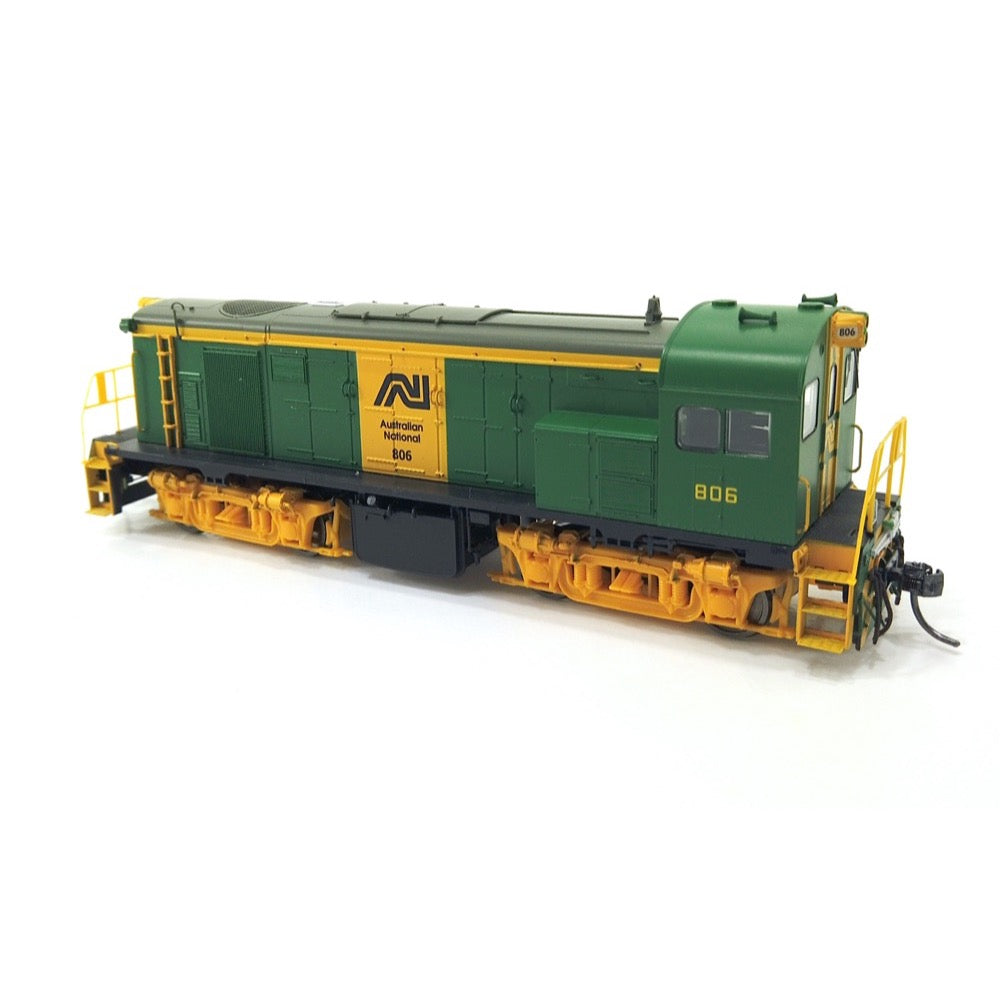
SDS Models HO 806 AN Green & Yellow 800 Class Locomotive
123.00
$
<h3>SDS Models HO 806 AN Green & Yellow 800 Class Locomotive</h3>
<p>Entering service from the mid 1956 onwards these 10 English Electric 750 HP shunting locomotives were numbered from 800 to 809. They were predominantly found working around Port Adelaide and in particular Gilman Yard. Later and from time to time they could also be found working Passenger trains around the suburbs. They remained in service until the late 80s and some units through until 1991, all except 801 were scrapped. When AN commenced operations the class leader 800 was renumbered to 810.</p>
<h3>Features</h3>
<ul>
<li>Highly detailed Ready-to-Run HO gauge model</li>
<li>Precisely tooled plastic body (ABS)</li>
<li>Genuine Kadee scale head whisker coupler</li>
<li>Separately applied handrails and detail parts</li>
<li>5-Pole skew wound electric motor and dual flywheels</li>
<li>All wheel drive and electrical pickup</li>
<li>LED head and marker lights, body mounted</li>
<li>All models come standard with an MTC 21 pin motherboard</li>
</ul>
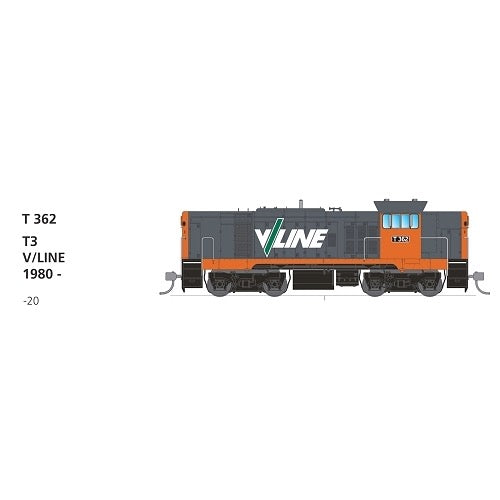
SDS Models HO T362 VR Blue & Gold T3 Series T Class Locomotive DCC Sound
173.00
$
<p>The Victorian Railways received their second series of T class locomotives from late 1959, these were mechanically similar to the first series but featured a new raised height operating cab layout. This new style of raised cab design featured throughout the remainder of the T class series.</p>
<p>SDS Models are pleased to offer the inclusion of the T-2 series within our range of Victorian Railways T class models.</p>
<p>Based upon the tried and proven Austrains T class mechanism we have comprehensively retooled almost every item, bringing the model inline with our exacting scale and design standards. Some 220 new or re-made parts are involved in the production of the four series we are offering below. All the models now feature prototypically correct width long hoods, series specific and appropriate fuel tank and battery box combinations, improved appearance bogie side frames and brake shoe / wheel tread alignment and a host of other design detail enhancements.</p>
<h3>Features</h3>
<ul>
<li>Highly detailed Ready-to-Run HO gauge model</li>
<li>Precisely tooled plastic body (ABS)</li>
<li>Genuine Kadee scale head whisker coupler</li>
<li>Separately applied handrails and detail parts</li>
<li>5-Pole skew wound electric motor and dual flywheels</li>
<li>All wheel drive and electrical pickup</li>
<li>LED head and marker lights</li>
<li>All models come standard with an MTC 21 pin motherboard</li>
<li>Exclusive and locally recorded EMD sounds by DCCSound</li>
</ul>
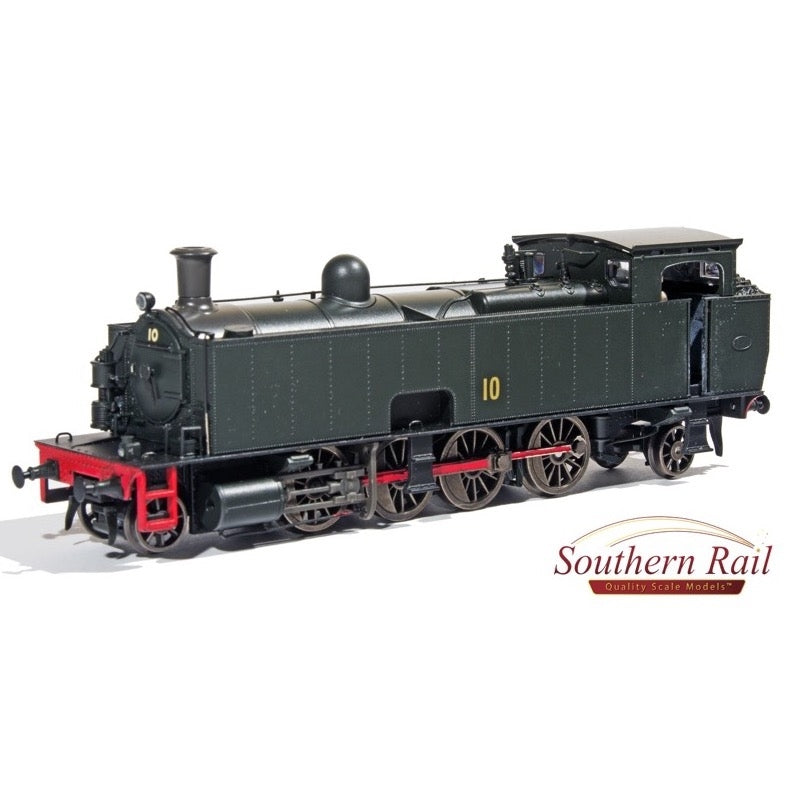
Southern Rail HO South Maitland Railway 10 Class Plain Black #20 w/DCC Sound
310.00
$
<h3>Features </h3> <ui>
<li>READY TO RUN </li>
<li>5 POLE SKEW WOUND MOTOR</li>
<li>ALL WHEEL DRIVE & PICK UP</li>
<li>BLACKENED METAL WHEELS</li>
<li>METAL CHASSIS </li>
<li>FACTORY PAINTED & DECORATED</li>
<li>12 VARIATIONS & 10 LIVERIES IN THE FIRST RUN</li>
<li>AVAILABLE WITH 21 PIN ESU SOUND DECODER</li>
<li>PLASTIC ABS BODY </li>
<li>SUPER DETAILED </li>
<li>SEPARATELY APPLIED METAL PARTS</li>
<li>DETAILED CAB INTERIOR WITH PAINTED DRIVER & FIREMAN</li>
<li>OPERATING HEADLIGHTS & MARKER LIGHTS </li>
<li>GENUINE KADEE COUPLERS </li></ui>
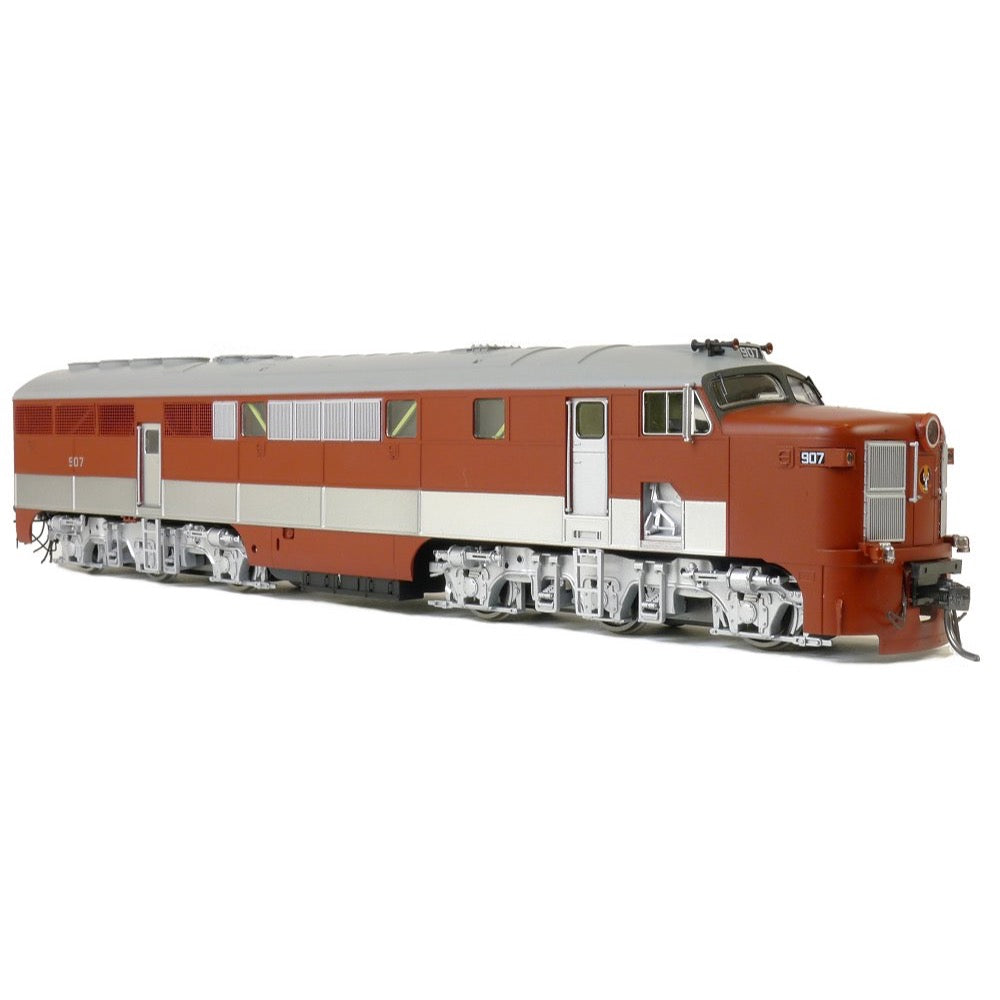
SDS Models HO ANR 900 Class Locomotive 907 DCC Ready
139.00
$
<p>Arguably the first of the streamliners, and Australian built mainline locomotives. The SAR 900 class diesel-electric locomotive were designed and built in-house by the South Australia Railways, they used English Electric V16 engines. English Electric also supplied the generators and traction motors.</p>
<p>The 10 units were delivered between 1951 and 1953, all were out-of-service by mid 1985.</p>
<p>900 Lady Norrie is preserved by the National Rail Museum, she also ventured across into Victoria to appear at Spencer Street station for the Aus Steam 88 festival. 907 and 909 were operated by SteamRanger tourist railway until 1995.</p>
<p><strong> We have produced 4 body variants for the 900 class:</strong></p>
<ul>
<li>Early service without large forward roof hatch with single Dynamic Brake fan shroud.</li>
<li>Early service with large forward roof hatch with twin Dynamic Brake shroud.</li>
<li>Late service with front twin sealed beam headlight.</li>
<li>Preservation with front and rear twin sealed beam light.</li>
</ul>
<h3>Features</h3>
<ul>
<li>Highly detailed Ready-to-Run HO gauge model</li>
<li>Precisely tooled plastic body (ABS)</li>
<li>Genuine Kadee scale head whisker coupler</li>
<li>Separately applied handrails and detail parts</li>
<li>5-Pole skew wound electric motor and dual flywheels</li>
<li>All wheel drive and electrical pickup</li>
<li>LED head and marker lights</li>
<li>All models come standard with an MTC 21 pin motherboard</li>
<li>Exclusive sound by DCCSound</li>
</ul>
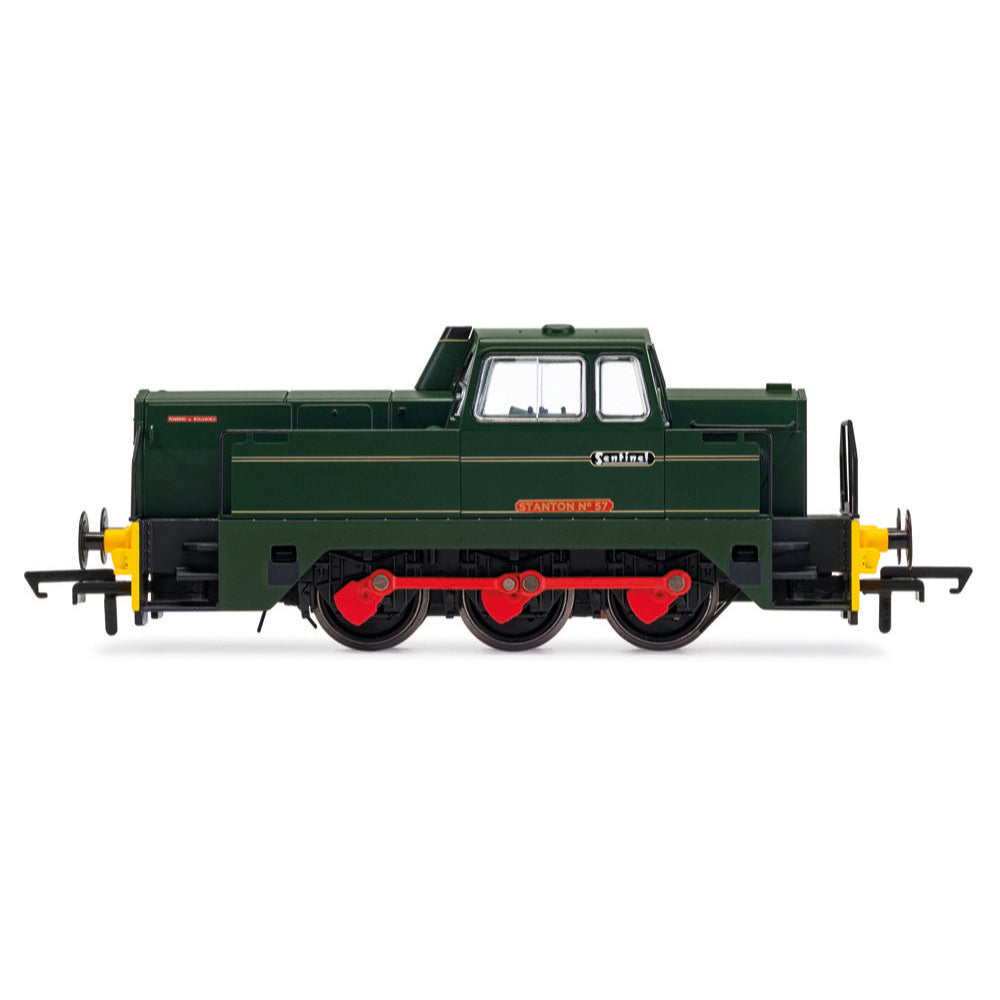
Hornby R30085 OO NCB Sentinel 0-6-0 Stanton No.57
69.00
$
<p>Founded as Ally & MacLellan, Glasgow in 1875 and then later known as the Sentinel Waggon Works Ltd, the company went through various place and name changes until in 1957 Sentinel (Shrewsbury) Ltd was obtained by Rolls-Royce. At that time Sentinel were producing steam locomotives and lorries, but the manufacturing of these vehicles ceased in 1958.</p>
<p>In 1959 Sentinel produced a prototype diesel shunter which was operated on the military controlled Shropshire & Montgomeryshire Railway. In total 17 were produced and operated quite successfully during that year. 1963 saw the introduction of the 34 ton chain drive 4 wheel Rolls-Royce diesel powered Sentinel Shunter rated at 233 bhp which was later uprated to 255bhp.</p>
<p>As time progressed the design was modified with all manner of variations, including 6 and 8 wheel coupled locomotives which found service in collieries, dockyards, quarries and foundries, with others being exported and operated on Portuguese Railways. Over the years, as these locomotives were retired, many found their way on to preserved railways where they continue to provide stalwart service.</p>
<p>Rolls Royce Sentinel 10214 was built in November 1964 for the Stanton Ironworks in Ilkeston. While there the locomotive was given the number 57, and worked alongside other Sentinels, often hauling tipper wagons loaded with molten iron. More recently the locomotive could be found working at Boulby Mine in Yorkshire, painted in a bright yellow livery and named 'Lady Potter'.</p>
<h3>Specification</h3>
<ul>
<li>Item Length - Without Packaging (cm): 13</li>
<li>Item Height - Without Packaging (cm): 5</li>
<li>Item Width - Without Packaging (cm): 3.5</li>
<li>Item Scale: 1:76 Scale 00 Gauge</li>
<li>Finish: Painted</li>
<li>Colour: Green</li>
<li>DCC Status: DCC Ready 6 pin socket</li>
<li>Operator: National Coal Board</li>
<li>Designer: Sentinel Waggon Works</li>
<li>Livery: NCB Green</li>
<li>Minimum Curve (mm): Radius 1</li>
<li>Motor: 3 Pole Skew wound</li>
<li>Number of Parts: 1</li>
</ul>
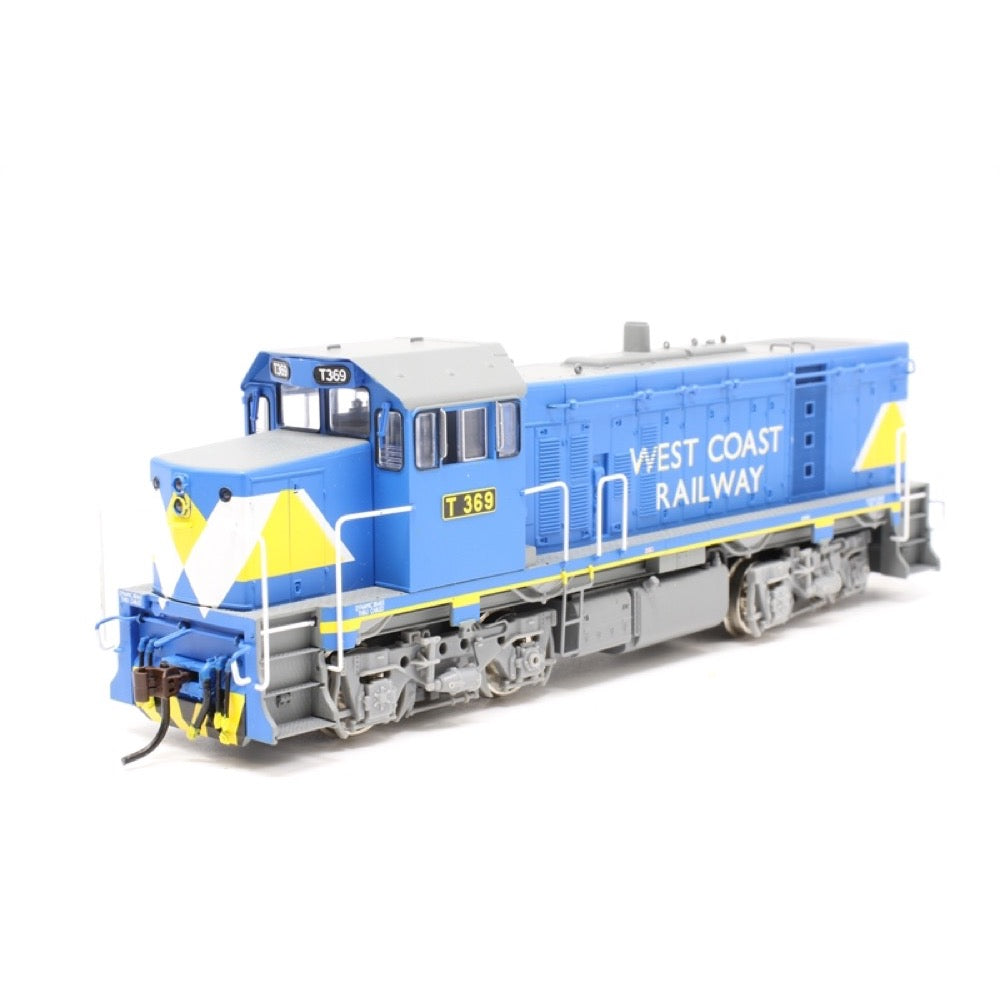
Powerline PT3-4-369 HO T369 West Coast Railway Series 3 T Class
121.00
$
<h3>Powerline HO West Coast Railway Series 3 T Class T369</h3>
<p>A total of 94 T-class diesel-electric locomotives were built by Clyde Engineering (Granville) for the Victorian Railways between 1955 and 1968. Although ordered as branch line locomotives, they were often used on main line services when the branch lines began to close.</p>
<h3>Specifications</h3>
<ul>
<li>
<p>HO Gauge (1:87 Scale)</p>
</li>
<li>
<p>T369 T Class in West Coast Railway Liver</p>
</li>
</ul>


